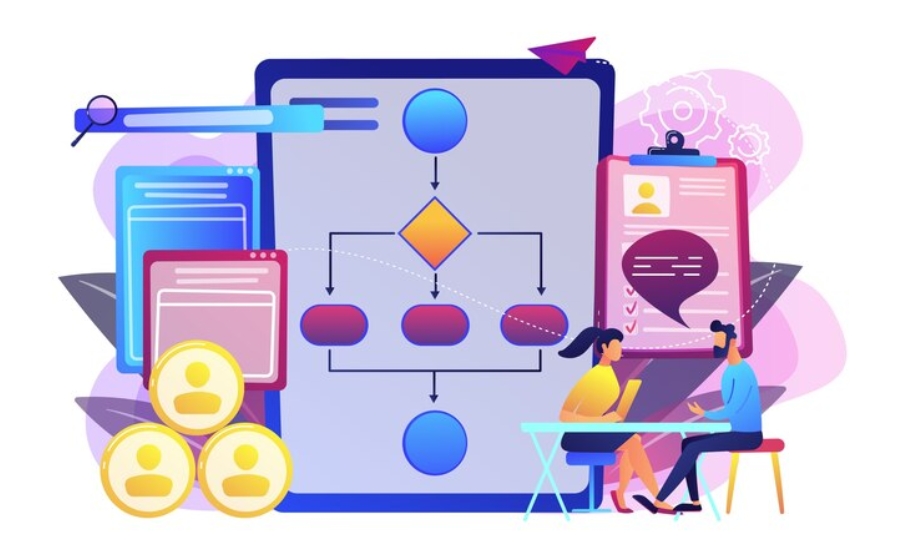
In the fast-paced world of finance, technology has ushered in a revolutionary era through Fintech. This combination of advanced technologies is reshaping how financial services are delivered, making them faster, more accessible, and more secure. As we navigate through 2024, the importance of Fintech software development cannot be overstated. It plays a crucial role in enhancing customer experiences, cutting operational costs, and driving profitability for businesses.
The impact of Fintech extends far beyond mere convenience; it’s a transformative force that disrupts traditional financial paradigms. From mobile banking to cryptocurrencies and robo-advisors, Fintech encompasses a diverse array of solutions tailored to meet varied financial needs efficiently. This evolution isn’t just about adopting new tools—it’s about embracing innovations that ensure compliance with rigorous regulatory standards while pushing boundaries in competitive markets.
Choosing the right partner for Fintech software development is paramount. It involves selecting a fintech app development company that not only possesses deep expertise in finance and technology but also shares your vision for growth and innovation. By leveraging cutting-edge tools, adhering to industry best practices, and prioritizing your strategic goals, you can confidently steer your Fintech initiatives towards success in the digital age.
Market overview of the fintech industry
The fintech industry stands at the forefront of modern finance, transforming how individuals and businesses engage with financial services. From seamless digital payments to innovative investment platforms, fintech encompasses a wide array of technologies reshaping the financial landscape. Consumers are increasingly embracing mobile payment solutions, while digital investments offer accessible, cost-effective options for investors globally.
According to Boston Consulting Group, fintech revenues are assured to skyrocket, projecting a significant growth trajectory from $245 billion to an estimated $1.5 trillion by 2030. This growth reflects the expanding market and also emphasizes fintech’s potential to address gaps in traditional finance, offering customized solutions that enhance customer experiences and empower small businesses worldwide.
Most promising fintech trends of 2024 and beyond
The fintech landscape in 2024 and beyond is marked by rapid evolution, driven by shifting customer needs, technological progress, and regulatory changes. Projections indicate substantial growth, with the global fintech market assured to expand significantly, reflecting its pivotal role in modern finance. Here are the most promising fintech trends of 2024 and beyond to look for:
1. Artificial Intelligence and machine learning
Artificial Intelligence and machine learning are changing the fintech landscape for the better while driving advancements in data analysis, customer service, fraud prevention, risk assessment, and operational efficiency. These technologies empower financial institutions to make informed decisions, deliver personalized experiences, and automate complex processes. Adopting AI and ML ensures fintech companies stay competitive and responsive to evolving consumer expectations in the digital era.
2. Blockchain and cryptocurrency
Blockchain and cryptocurrency are reshaping finance with their decentralized, transparent, and secure transaction capabilities. They introduce new ways of financing through methods like initial coin offerings (ICOs), security token offerings (STOs), and decentralized finance. This technology ensures trust in transactions and opens avenues for innovative financial products and services that bypass traditional intermediaries, paving the way for a more inclusive and efficient financial ecosystem.
3. Open banking and API economy
Open banking and the API economy are reshaping the financial landscape by enhancing the integration and interoperability of various financial services and platforms. These innovations streamline customer experiences while making transactions and financial management more seamless and convenient. Furthermore, they promote competition and spur innovation within the fintech sector while ensuring compliance with regulatory standards and robust data protection measures. By leveraging open banking and APIs, financial institutions and fintech companies can offer enhanced services that cater to evolving consumer needs in a secure and efficient manner.
4. Digital Identity and biometrics
Digital identity and biometrics play crucial roles in enhancing security within fintech. Biometrics, such as fingerprints, facial recognition, and voice scans, provide robust authentication methods, ensuring transactions are secure and reliable. These technologies streamline customer onboarding, making the process smoother and more efficient while reducing the risks of identity fraud and theft. By adopting digital identity and biometrics, fintech companies improve security and build trust with users, setting higher standards for protecting sensitive financial data and ensuring a safer digital environment overall.
5. Green and social fintech
Green and social fintech are paving the way towards a more sustainable and inclusive financial sector. These initiatives focus on promoting environmental sustainability and social impact through innovative financial services. By integrating green and social considerations into financial products and investments, fintech companies are meeting regulatory requirements and attracting socially conscious customers and investors. This trend aligns with global sustainability goals, offering solutions that address both environmental challenges and societal needs, thus shaping a more responsible and impactful future for finance.
Essential steps for fintech software development
Developing fintech software requires meticulous planning and execution. Following essential steps ensures your product meets market demands and regulatory standards while delivering exceptional user experiences. Here are the right steps you need to follow:
1. Clearly define your project scope and requirements
The initial step in fintech software development is to clearly define your project scope and requirements. Specify the type of fintech solution you want, the features and functionalities needed, and preferred technologies. Outline your quality and performance expectations, along with budget and timeline constraints. This clarity ensures that all stakeholders are aligned and sets a solid foundation for successful project execution.
2. Select the best outsourcing model and partner
Choosing the right outsourcing model and partner is crucial for fintech software development success. Decide if you want to outsource the entire project or specific parts, and whether to work with a single vendor or multiple vendors. Evaluate potential partners based on their expertise, experience, portfolio, and client reviews. Opt for onshore, nearshore, or offshore models based on your needs to ensure seamless collaboration and high-quality results.
3. Sign a contract and create a communication plan
Signing a contract and creating a communication plan is vital for successful fintech software development. Ensure the contract covers project scope, requirements, deliverables, milestones, payments, and confidentiality. Establish a communication plan detailing the frequency, mode, and agenda of updates. Clearly define roles and responsibilities to foster transparency and collaboration, ensuring both parties stay aligned and focused on achieving the project’s goals.
4. Monitor and manage project progress and performance
Monitoring and managing project progress and performance is crucial for fintech software development success. Regularly track key performance indicators (KPIs) like quality, functionality, usability, security, and reliability. Ensure the project stays within budget and timelines. Provide and receive feedback consistently, addressing any issues promptly. This proactive approach keeps the project on track and ensures the delivery of a high-quality fintech solution.
5. Test, and deploy the software solution, and provide support and maintenance
The final step in fintech software development involves thorough testing, seamless deployment, and ongoing support. Conduct comprehensive tests to ensure your software meets all requirements. Deploy the solution to its target environment, ensuring smooth integration. Provide continuous support and maintenance, including bug fixes, updates, and enhancements, to guarantee optimal performance and user satisfaction. This ensures a reliable and high-quality fintech solution.
How Much Does It Cost to Build a Fintech App
Building a fintech app can be a game-changer for your business, offering innovative solutions and transforming customer experiences. However, the cost of developing such an app varies significantly based on numerous factors. Understanding these elements can help you plan your budget effectively and ensure your app’s success.
Costs depend on the app’s complexity, desired features, and technology stack. A basic app might cost between $25,000 and $50,000, while more complex solutions with advanced functionalities can range from $55,000 to $300,000. Partnering with an experienced mobile app development company can optimize your investment and deliver a top-tier fintech app.
Conclusion
In conclusion, navigating the dynamic landscape of fintech software development in 2024 requires careful planning and execution. The essential steps outlined in this guide are crucial for ensuring that your fintech solution meets market demands, adheres to regulatory standards, and delivers exceptional user experiences.
Fintech is not just about leveraging advanced technologies; it’s about transforming the financial services industry to be more efficient, inclusive, and innovative. By following these steps—defining your project scope, selecting the right outsourcing partner, signing detailed contracts, monitoring progress, and providing ongoing support—you can successfully bring your fintech vision to life and make a significant impact in the industry.


